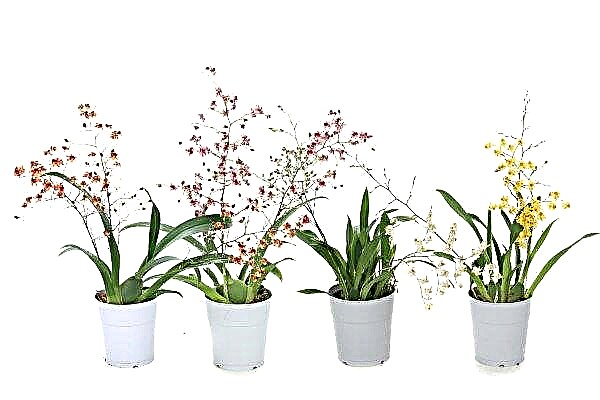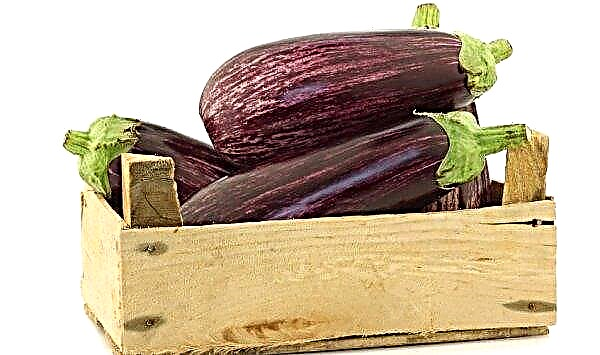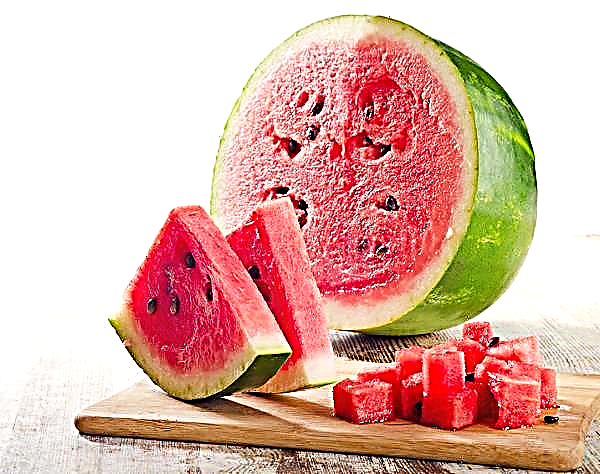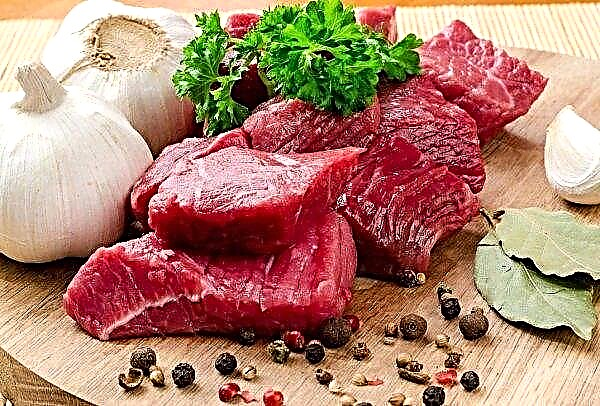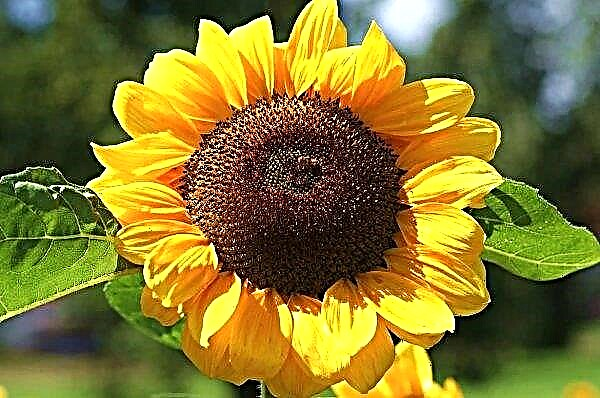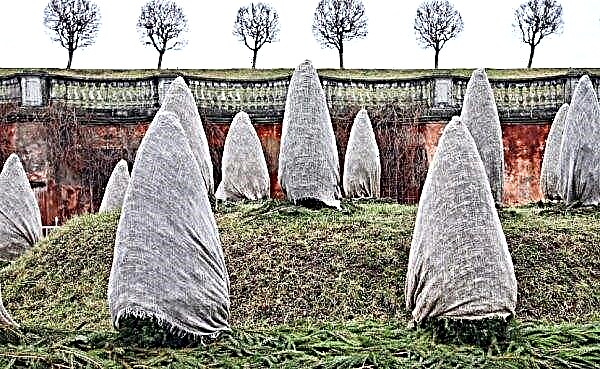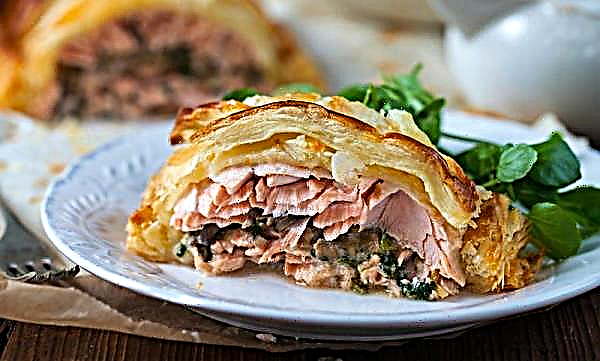Narcissus is called a spring flower. It adorns garden beds soon after the snow has completely melted. In nature, it can grow among herbs in meadows, near ponds, on gentle slopes of mountains.
Botanical Description
At first glance, you might think that all the flowers of this species are the same - they have too many common features. But this is far from the case.
Narcissus (lat.Narcissus):
- genus of monocotyledons;
- bulbous plant;
- perennial;
- Amaryllis family.
Did you know? In the territory of Transcarpathia there is a reserve «Valley of Daffodils»where nearly 500 plant species have been collected, many of which are rare.
These flowers are actually flowering herbs. Outwardly easily recognizable by six petals and a voluminous outgrowth in the middle, although there are “double” shapes. The characteristic colors are white and yellow, more precisely, all kinds of tones and shades of these two colors (can be diluted with pink, cream, orange and even red).
Scientists involved in the breeding and systematization of species, there is no consensus on the number of varieties of daffodils. They give different numbers - from 50 to 150.

Features of the structure:
| Perianth | It can be of different sizes (large, medium or small), but it always has the shape of a tube with six lobes. |
| Bribe | Located in the perianth vent. Outwardly resembles a tube or a crown, a bell or a recessed saucer - it depends on the variety. Differences are possible not only in shape, but also in color, at the location. |
| Stamens | They are attached to the perianth tube, while remaining separate from the progeny. |
| Pestle | Threaded in shape, stigma truncated or trilobate. |
| Stem | Thin, completely devoid of leaves. |
| Ovary (fetus) | Most often oblong or oval. This is a trihedral and three-rooted ovary, which opens, forming three elements. |
| Seeds | Black, cast, round, with protein. Diameter - up to 3 mm. Placed in two rows. |
| Flower bud | Tearing off the top of the wrapper, which dries, but remains around the ovary. |
| Flower stalk | Consists of 2 parts. Peduncle in length can be up to 50 cm. Flowers on a peduncle, the length of which is 0.5-15 cm, can be located at different angles. |
| Leaves | Basal. Color varies in green. The shape can be very diverse, reaching several cm across. Visually resemble dense ribbons. |
| Bulb | Pear-shaped. Thick enough. |
| Roots | Depart from the bottom of the smooth bulb of white color. Reach a length of 70 cm or more. |
Garden classification
Breeders all over the world have bred many varieties.
These differences are based on:
- in the appearance of the flower;
- in the number of flowers;
- in the characteristic of the peduncle;
- in the field of application;
- in the period and period of flowering;
- at the time of planting the bulbs;
- in resistance to diseases and parasites.
Important! Poisonous bulbs of narcissus contain narcissin alkaloid (lycorin), therefore, they can be dangerous for pets.
Thanks to the creation of a unified garden classification of daffodils, it is possible to systematize such a variety of varieties.
In this scheme, 13 subgroups are distinguished, 12 of which include flowers of garden origin, and one includes natural species:
- Tubular. One of the most common groups. On each stalk there is one but large enough bud of traditional flowers. Green leaf with gray haze. The crown is elongated, its length may be equal to the size of the perianth petal, and may be longer.
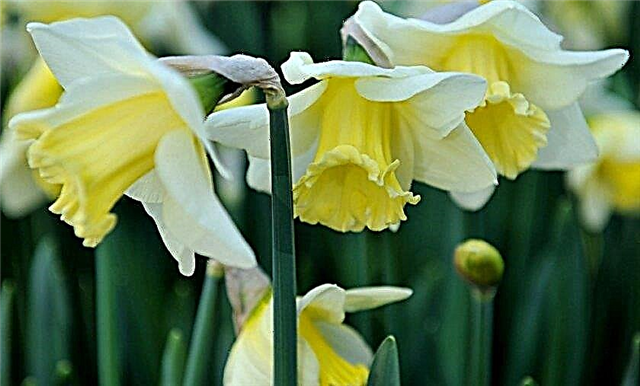
- Large-crowned. The stem is decorated with one large flower. The crown contrasts in color with the petals. It is shorter than the first group, but longer than the small-crowned representatives.
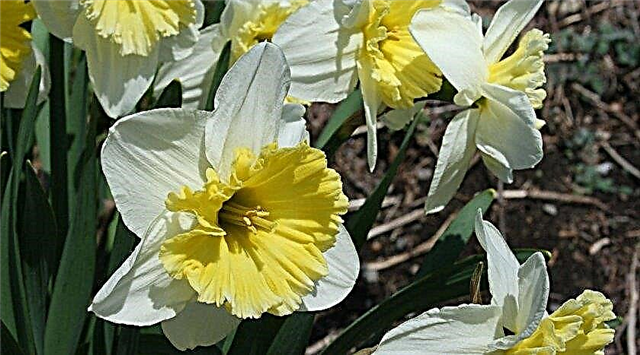
- Shallow-crowned. The flowers are large, solitary, usually with a creamy shade of white. It features a small elongated crown.
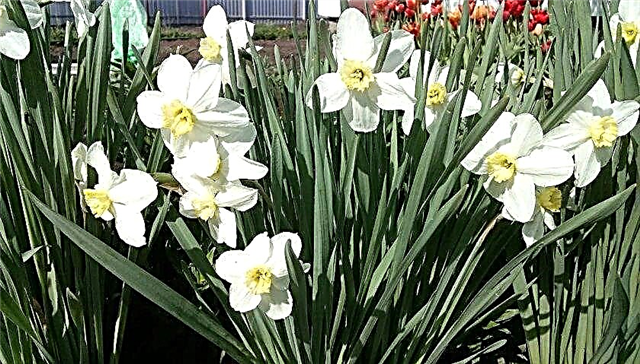
- Terry. This is a well-known group. The flowers are large, characterized by a variety of colors and shapes. Terry perianth is the base of the flower, and the crown may be completely absent or consist of small petals.
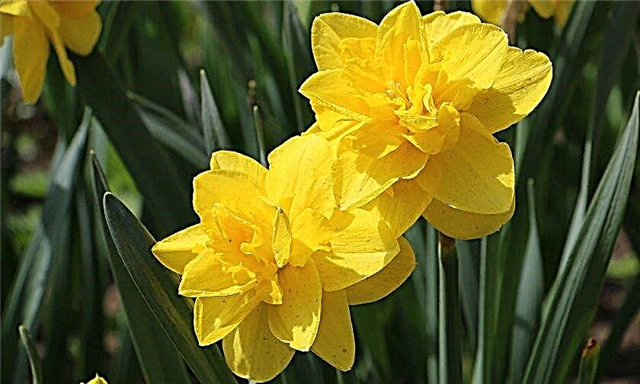
- Triandrus. A group of stunted plants. On the stem there can be up to four small flowers.
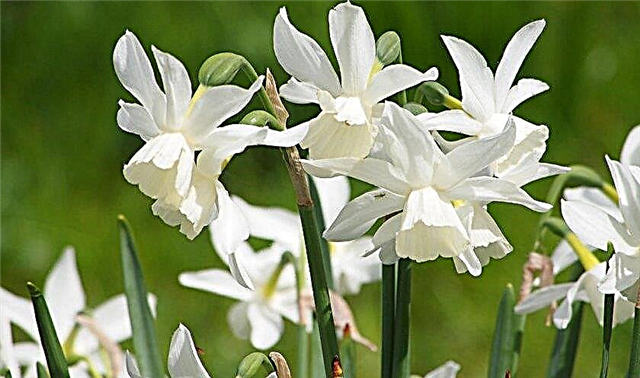
- Cyclamenoid. The group is small. Relatively small single flowers have a thin long crown that is superior to the perianth. She stretches forward, and the perianth is laid back.
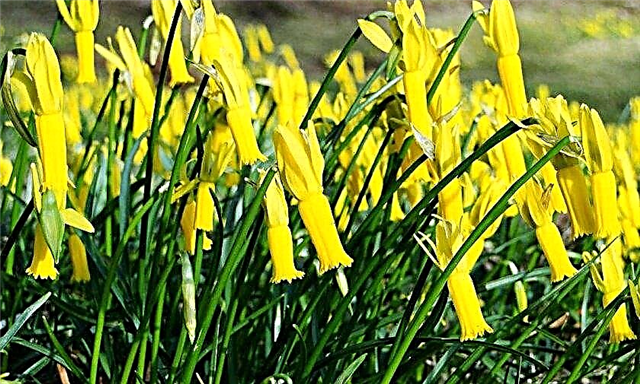
- Zhonkilievidnye. Small flowers with a crown in the form of a bowl. The leaf is more like grass. On the stem can be up to 6 flowers.
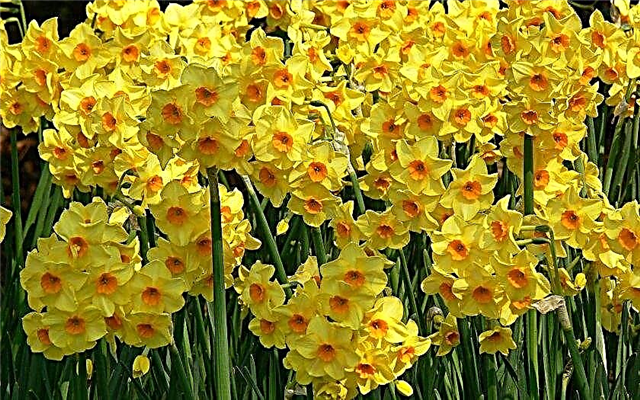
- Tatsetovidnye / bouquet.Multi-flowered - up to 20 flowers on the stem. Crowns are small, rounded petals.

- Poetic. Daffodil white (ordinary). A small group of varieties that have a strong aroma. This is a large flat single flower with a small, bright orange or yellow crown.

- Hybrids. Single small flowers, but a crown of a specific shape - bell-shaped or funnel-shaped.

- Split-crowned / split-crowned.Belongs to the number of popular species, including because of the crown of an unusual shape. It can be completely dissected or have segments.
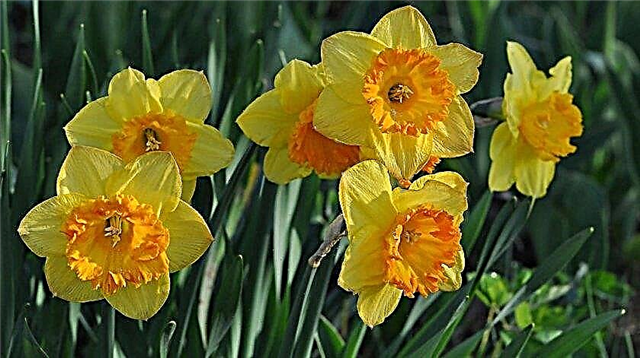
- Other. Consists of species that, by their characteristics, do not belong to previous groups.
- Species. Includes species, wild forms and hybrids of wild-growing forms.
Did you know? Daffodils secrete poison that can destroy other plants. To neutralize it, florists leave the flower in the water for 24 hours.
Spread
The homeland of most species of daffodils is the eastern part of the Mediterranean and the Middle East. Several species come from Asia and China. It grows everywhere in Europe and Asia. This unpretentious flower in growing and care begins to bloom one of the first. It will be a great addition to any spring flower garden.
Easily adapts to external conditions. It can be planted in the shade or in the sun, but the flower will look much better, getting enough sunlight. The soil may be neutral. The main condition is good drainage to prevent stagnation of water.

Many myths and legends are devoted to this amazing plant. In the East, very often a flower is compared with the bottomless eyes of a lover. In ancient Greece, the daffodil was a sign of sorrow, and in ancient Rome, these flowers met the victors from the battlefield.
Europe is considered a talisman that attracts love. And for the Chinese, daffodil is an invariable attribute of the New Year holidays. It symbolizes wealth and prosperity.
 If we turn to the language of flowers, the daffodil symbolizes egoism and narcissism, as the eponymous youth from the legend.
If we turn to the language of flowers, the daffodil symbolizes egoism and narcissism, as the eponymous youth from the legend.
Selection history
In culture, references to this flower appeared in the 16th century. He became popular in England, where he began active work on its cultivation. Breeding work is traditionally dominated by the United Kingdom, USA, New Zealand and the Netherlands. It is in these countries that almost the entire range of these plants has been bred.
In the work of breeders (in breeding new varieties), the first task is the selection of parental pairs. It is necessary to exclude plants that have any defects, because they will only intensify. One correctly selected parent pair can set the direction in work for many years and varieties.
Breeders work with different groups of daffodils, achieving:
- original colors;
- immunity (immunity to disease);
- high reproduction rate;
- winter hardiness and unpretentiousness;
- “Regular” forms in the structure.
 The registration of the cultivated varieties and a description of the available ones is carried out by the Royal Horticultural Society (Great Britain).
The registration of the cultivated varieties and a description of the available ones is carried out by the Royal Horticultural Society (Great Britain).
Aromatic properties
Translated from the Greek language, the word "narcissus" means "stupefying." Perhaps that is why the same root with the word "anesthesia". This was facilitated by the strong intoxicating sweet aroma of the flower, due to the presence of essential oils, which are actively used in cosmetology.
But this is in the past - gradually it has lost its former popularity, because cheaper synthetic flavors have appeared. This amazing flower found its application in medicine.
- Its medicinal properties may be useful in:
- leukemia;
- radiculitis;
- pneumonia;
- prostatitis and adenoma;
- wound healing.
Important! Narcissus can cause a severe allergic reaction or cause migraines.
Diseases and Pests
In order to slow down the process of bulb wear, it is important to timely remove the flower stalks that have already faded before seed formation. There are more than 40 pathogens and more than 10 types of parasites that can harm the plant.

Most of the diseases and pests spread through the bulbs, i.e. planting material is already infected. Because of this, the external characteristics of the flower worsen or flowering is completely absent.
Not always treatment helps save the plant from death. Sometimes there simply are no drugs against a particular disease. Therefore, not only timely and correct treatment is important, but also the prevention of possible diseases.
Did you know? In Prussia, the bride, moving to her husband’s house, took a daffodil flower with her - the well-being of the created family depended on its safety.
Fungal diseases:
- Fusarium
- botrythiosis (gray rot);
- sclerotic rot;
- penicellosis rot;
- rust;
- spotting;
- curvularia;
- mosaic of daffodils.

You can avoid infection with fungal diseases by observing the rules for wintering the bulbs, first of all, preventing moisture increase, carefully drying them before planting. It is also recommended to treat the soil and the bulbs themselves with special antifungal drugs.
Bacterial diseases (scab, rot) can be determined by changes in appearance:
- yellowing of foliage;
- growth retardation;
- decay.
It is worth fighting with scab using antibacterial drugs, fungicides (for example, "Prestige", "Maxim Dachnik") or apply thermal disinfection. But rot is a sentence for a plant. To prevent the occurrence of such problems, potash fertilizing helps increase the plant's resistance to adverse effects. Do not be late with the digging of bulbs.
Pests:
- various nematodes;
- ticks;
- large daffodil fly and small bulbous fly;
- a bear;
- slugs.

Recommended insect control measures:
- periodically loosen the soil;
- to fertilize;
- remove weeds;
- carefully select the bulbs before planting, getting rid of the affected;
- burn all soft and rotten bulbs.
In the area where infected root tubers were discovered, it will be useful to sterilize the soil.
This can be done by heating with steam under pressure or with toxic chemicals:
- carbon disulfide;
- chlorine
- bleach.
All measures for processing bulbs should be carried out in a dormant period, i.e. before the growth of the bulbs begins, so as not to damage the young roots.
Important! In order to avoid the spread of infection among all plants, it is recommended to remove diseased flowers with the bulb and destroy, and treat the neighboring plants with drugs aimed at combating a specific pest.
Daffodils are surprisingly expressive flowers that will look equally impressive on a flowerbed, designed in any style, in a pot on a windowsill or on a balcony, in a vase on a festive table. Their exquisite aroma will be the first to announce the arrival of spring.












